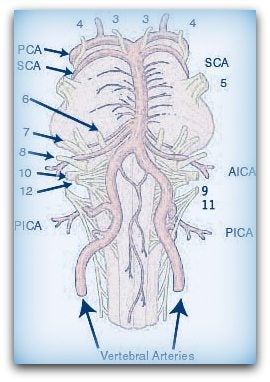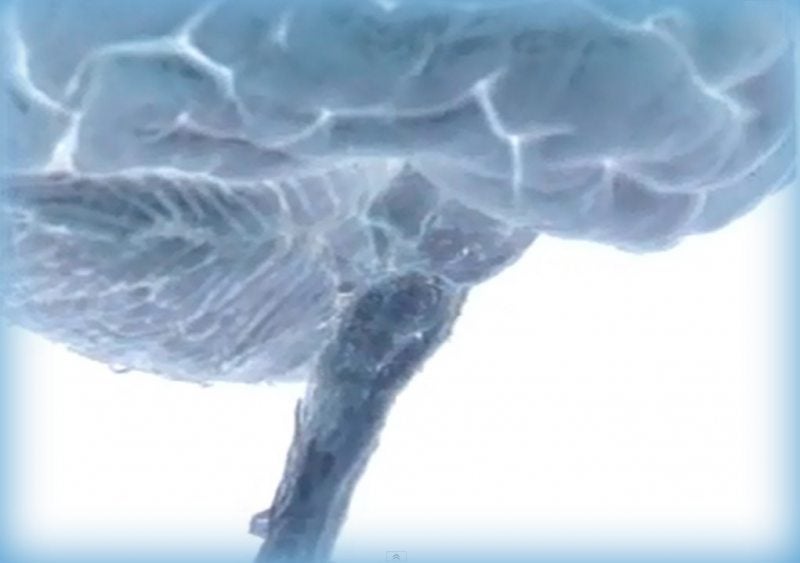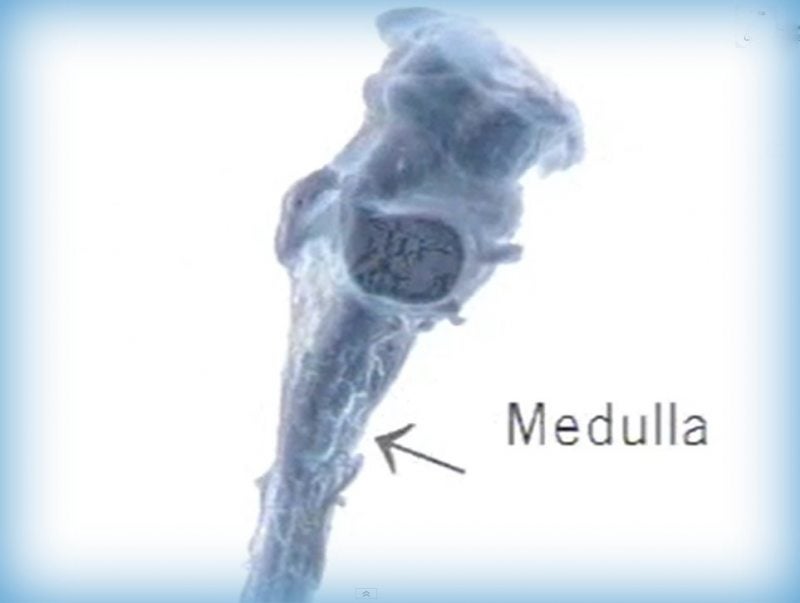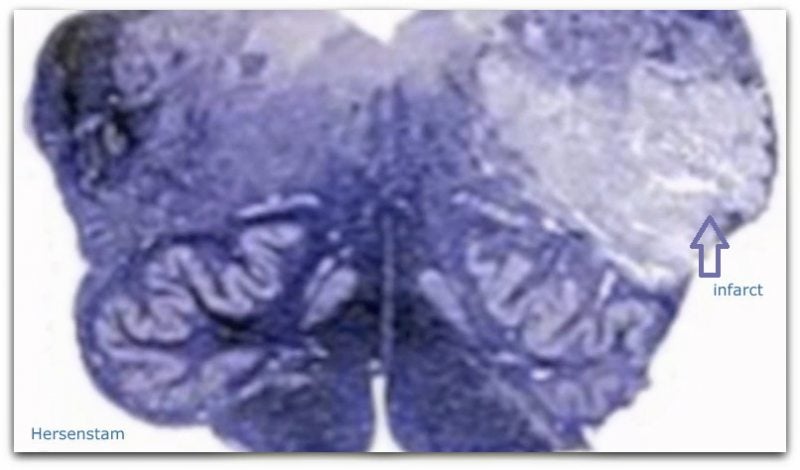Wallenberg syndrome - Lateral medullary syndrome


Posterior inferior cerebellar artery (PICA)
Depending on the area that is affected in the brainstem, infarction is called syndrome of Benedict, Claude, Foville, Millard-Gubler, Wallenberg and Weber. Read more....
Lateral medullary syndrome
Wallenberg syndrome (Lateral medullary syndrome)
Cerebral infarction or hemorrhage (stroke) in the medulla in the brainstem, has been named specifically as the syndrome of Wallenberg (or Wallenberg syndrome).
The medulla oblongata regulates vital characteristics of the body, such as blood pressure, heartbeat, breathing, sleep cycles, and digestion. It is also responsible for reflexes, especially reflexes of the face and throat (blinking, coughing, sneezing, and gagging), motor control, and certain senses, such as touch.


brain with brainstem part of the brainstem: medulla
The characteristic features of the Wallenberg syndrome are: suffer from hiccups, acute vertigo, jerky eye movements (nystagmus), difficulty swallowing, vomiting, and disorder in the vocalisation, including dysarthria and hoarseness.
It depends on the location if half-sided sweat secretion is reduced (sometimes even more!) Sensory disturbance in the soft palate. The Horner's syndrome is seen in this syndrome: a drooping eyelid and a pupil is smaller. People with this syndrome may be on one side of the face feel less (pain and temperature) and on the other side of their body too. Tinnitus (ringing) is a specified complaint.
Most people with the Wallenberg syndrome recover better than people who have had a different type of stroke. The recovery differs from one person to another: from six weeks to six months and others with more significant damage may have a more permanent disability.
According to a researcher Wallenberg syndrome can also occur after a chiropractic treatment (chiropractic manipulation Caplan, 1986)
 Horner's syndrome
Horner's syndrome
 Nystagmus
Nystagmus
 Brainstem infarctation (see arrow)
Brainstem infarctation (see arrow)
In summary:
- hoarseness (dysphonia)
- difficulty to articulate (dysarthria)
- nausea and vomiting
- hiccups
- rapid eye movements (nystagmus)
- a decrease in sweating (sometimes increase!)
- half sided feeling disorder -pains and temperature (sensory disturbance) perceived difference in how hot or cold something is on one side of the body
- dizziness
- difficulty in walking
- problems with the balance to be maintained
- sometimes sided paralysis or loss of strength and sensation (in arm, trunk, leg, face or tongue)
- loss of taste in the half of the tongue
- complaints that everything around the patient seems tilted or unbalanced
- heart rate deceleration (bradycardia)
- high or low blood pressure
- a co-ordination disorder (ataxia) at one side of the body (hemiataxia)
- vocal cord paralysis
- photosensitivity
- neuropathic pain (nerve pain)